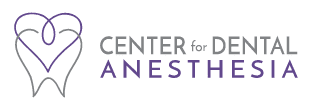
More Dental Health Articles
Oh, My Aching Jaw

More than fifteen percent of American adults suffer from chronic facial pain. Common symptoms include pain in and around the ear, tenderness of the jaw, clicking or popping noises or grinding when opening the mouth, ringing in the ears, earache without an infection, or even headaches, neck aches and shoulder pain.
Getting proper treatment for your pain may be very frustrating because diagnosing its source can be a bit of a mystery. The pain may be the result of an abscessed tooth or impacted wisdom tooth. The symptoms may be the result of an ear infection, sinus infection or a migraine. You may even need to check with your optometrist to be sure your pain is not from eyestrain. In many instances, however, these are symptoms of temporomandibular joint disorder (TMD).
TMD (or TMJ) refers to a range of conditions, including acute and chronic inflammation that affects the temporomandibular joint, which connects the mandible (lower jaw) to the skull, and is the point at which the jaw opens and closes.
Many factors can lead to TMD-related problems and symptoms may involve more than one of the numerous TMD components muscles, nerves, tendons, ligaments, bones, connective tissue and the teeth. Therefore, treatment of this disorder is usually multifaceted and can transcend the boundaries between several healthcare disciplines dentistry, neurology, physical therapy, and psychology. If it is determined that you have TMD, there are a variety of treatment approaches.
Some of the simple, non-invasive methods of TMJ treatment may include:
- Reshaping or straightening the teeth
- Use of muscle relaxants and anti-inflammatory treatments
- Physical therapy
- Posture training
- Stress management and relaxation techniques to control muscle tension
- Use of a mouth guard or NTI device
- Application of moist heat to the side of the jaw
- Avoiding chewing gum, sticky foods, bagels or hard bread crust
Since TMD related problems typically result from excess strain on the muscles of the face and jaw joints caused by an improper bite (occlusion), neuromuscular dentistry can be extremely useful in both treating symptoms and addressing the cause.
Any combination of the following neuromuscular and restorative techniques can be used to bring the joints, muscles and teeth into a harmonious relationship to permanently realign the bite replacement of worn-down teeth or crowns, orthodontics to place teeth into proper alignment, reshaping of teeth using T-Scan to detect where teeth are not properly touching.
Other Articles You May Find of Interest...
- Appliances Are In Now: How To Manage TMJ Disorder
- Why The Tooth Fairy Is Very Fun – and Important!
- Let’s Smile Dental’s 7&Up Club
- Strengthening Smiles: Understanding the Importance of Splinting Periodontally Involved Teeth
- Understanding Soft Tissue Grafting: A Key To Periodontal Health
- New Solutions for Dentures and Dental Implants
- Cerec Dental Technology

















